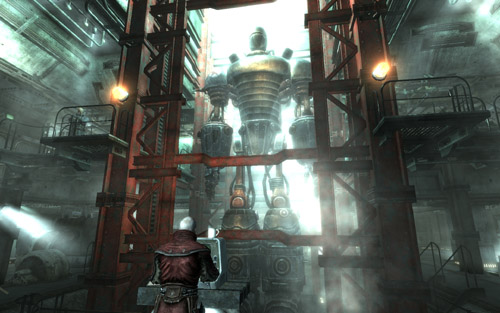Tom's Hardware Charts: 2009 Mainstream Graphics Update
New Tests With Graphics-Quality Slider Set At Low
In this set of results, we expand our graphics card charts with a supplementary comparison. This addition covers more mainstream graphics cards and compares how they fare when the graphics-quality slider is set a bit lower in a number of popular games.
The previous charts, which cover the latest and greatest GPUs with the graphics-quality settings set as high as possible, also get some new entries. With this update, our charts allow you to compare 68 different graphics chipsets, retail cards, and reference cards online.
You can now peruse precise performance results based on over 30 gaming benchmarks. The current basis for comparison will be updated monthly to include new graphics card reference models across all categories. In this new version, we cover additional benchmarks, results for when the graphics-quality slider is set at low and high in games, and more actual products.
In order to offer the best possible overview, we first measure performance for all graphics chips at standard clock rates. These charts are not, however, limited just to reference models from ATI and Nvidia. You can also compare results for off-the-shelf retail products, including standard offerings that match reference specs, plus cards with extra RAM, overclocked memory and GPUs, additional display connectivity, and other unique features.
This comprehensive approach lets us track the market more closely, because many vendors alter performance, cooling, and card designs in their commercial offerings.
Here are the links to our graphics charts, so you can investigate our findings or compare graphics cards to one another:
- Charts for High Settings
- Charts for Mainstream Settings
The benchmark suite that we're using draws from a broad palette of different games and 3D engines. Our goal is to create a workable mix of real-time strategy (RTS) games, simulations, role-playing games (RPGs), and 3D shooters, and to make sure we cover all of the most important 3D engines in our tests, including the Gamebryo, Source, and Unreal 3 engines. For OpenGL benchmarks, we were only able to find a new game from id Software after we had already completed our tests.
Get Tom's Hardware's best news and in-depth reviews, straight to your inbox.
| Benchmark Suite For 2009 | API | 3D Engine |
|---|---|---|
| Fallout 3 | DX9 | Gamebryo (Oblivion) |
| Far Cry 2 | DX10 | Dunia Engine |
| F.E.A.R. 2 | DX10 | LithTech Jupiter Extended (EX) |
| Left 4 Dead | DX9 | Source Engine (Half-Life 2) |
| The Last Remnant | DX10 | Unreal 3 |
| Tom Clancy's EndWar | DX10 | Unreal 3.1 |
| Tom Clancy's H.A.W.X | DX10 | Ubisoft (Blazing Angels) |
| 3DMark06 v1.1.0 | DX9 | Futuremark |
Current page: New Tests With Graphics-Quality Slider Set At Low
Next Page Low And High Settings, Defined-
haplo602 hmmm ... weird choice of options ...Reply
I would consider low as medium detail settings with no AA/AF up to 1680x1050 and 1900x1200 at low again without AA/AF ... any card that cannot meet this at playable fps is HTPC material at best. -
haplo602 also can you please PLEASE finaly implement multiple criteria selects ?Reply
I just wanted to have a look at the 9800GT in all the benchmarks at 1900x1200 no AA/AF. however I can either select the cards or only the benchmark for all cards. any fine tuning is not possible.
-
anamaniac Exodite3Shouldn't the mainstream segment go a little past the 8800GTS and the HD4670 at this point?Reply
The 4670/8800 are still powerful cars and will meet basic gamer needs. Hell, fallout 3 at high is playable for me on my pentium D, so what more do I need? (HD4670 underclocked by the way.) -
amnotanoobie anamaniacThe 4670/8800 are still powerful cars and will meet basic gamer needs. Hell, fallout 3 at high is playable for me on my pentium D, so what more do I need? (HD4670 underclocked by the way.)Reply
I also think the 4670, 9600GT, and 3870 are proper mainstream cards. The Old 8800GTS 320MB for me is a little bit questionable though. -
Onus Wow, great article; affirming and eye-opening. It affirms what I've thought for a long time, that surely many games are quite playable on cards like the HD4670. For players interested in the mechanics of the gameplay and/or the story line, this card is entirely suitable. I would like to have seen the HD4650 on the charts also, do you have benches for it?Reply
Eye-opening too, in that I can see why those who absolutely must have the eye candy, and might not care about other aspects of the game, want to spend $500, $600, or even more on graphics cards (and a PSU to support them!). While I hope they earned that money themselves, I can see much more clearly why they want to spend it.
-
belial2k it would be nice to know the reference system the cards were tested on. Unless I missed it someplace I didn't see it listed.Reply -
invlem I'm currently running a Core2Duo 6600 (2.4Ghz) with an old 8800 GTS 640,Reply
up to this point I have yet to find a game it cant handle at my resolution of 1680x1050, which I would consider to be the mainstream resolution for gaming.
So using the 8800 series, 4670 series is more than adequate for mainstream as far as I'm concerned.
Moving into the 1900x1200 and above resolutions, the 9800 / 4850 series would probably be better suited. -
oldscotch Might want to update the cost of the 4890. Newegg has one on sale now for $180 with a list price of $200.Reply
http://www.newegg.com/Product/Product.aspx?Item=N82E16814161276
The 260 seems a little high too.
